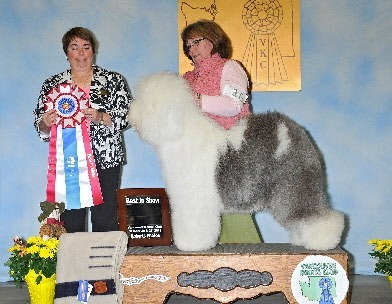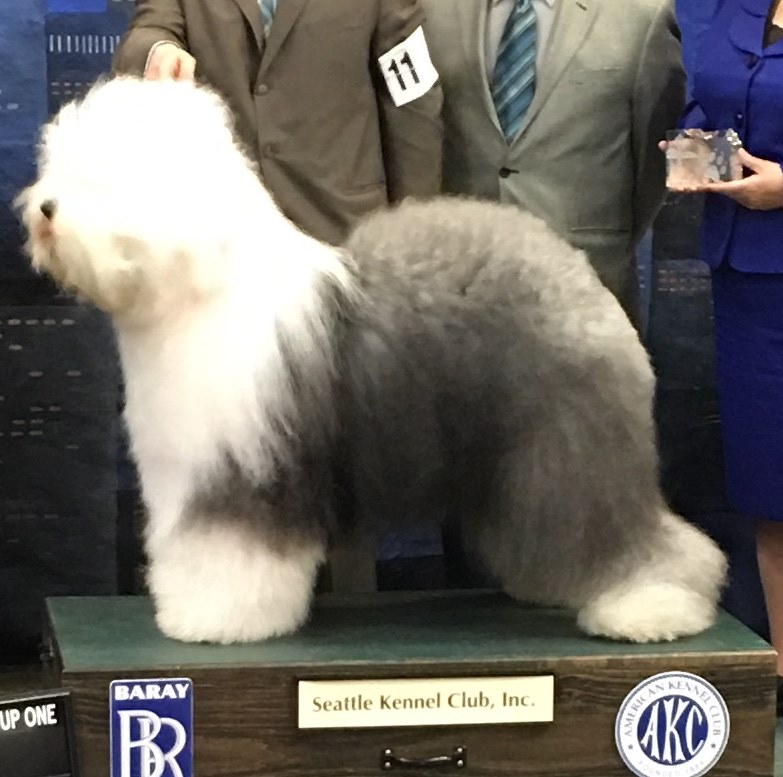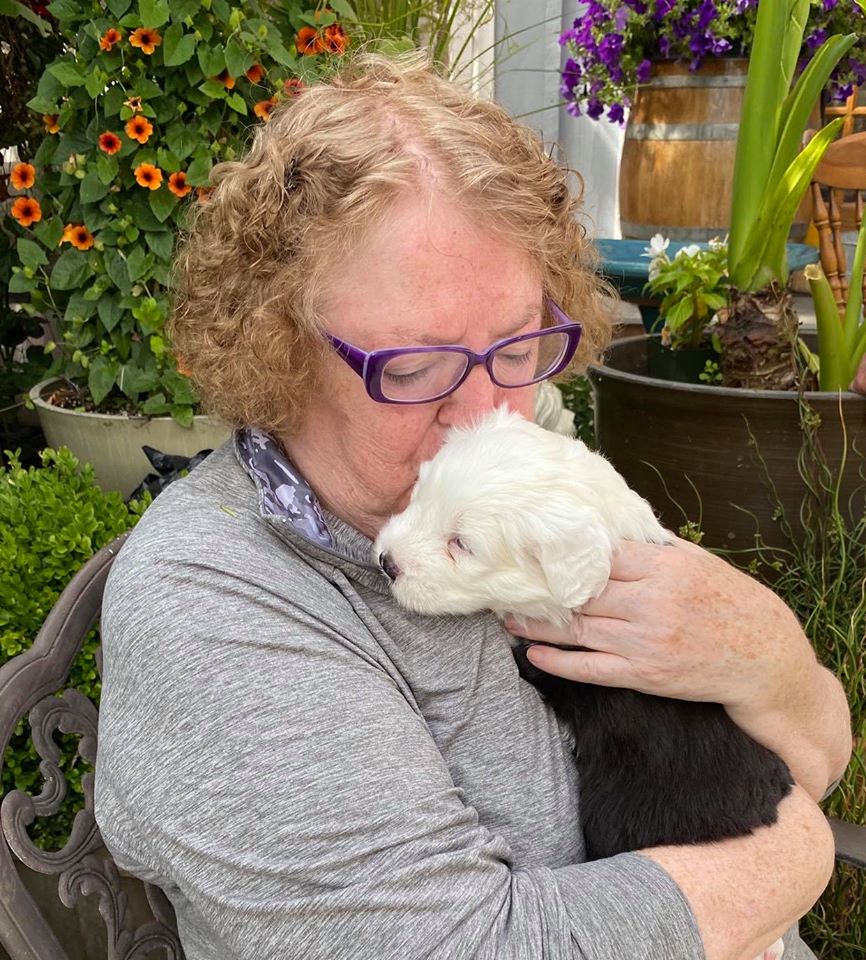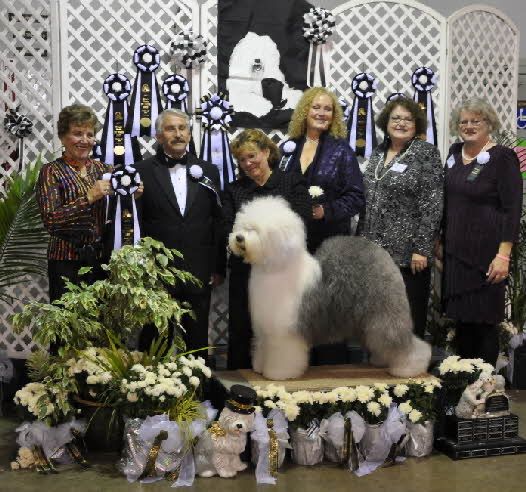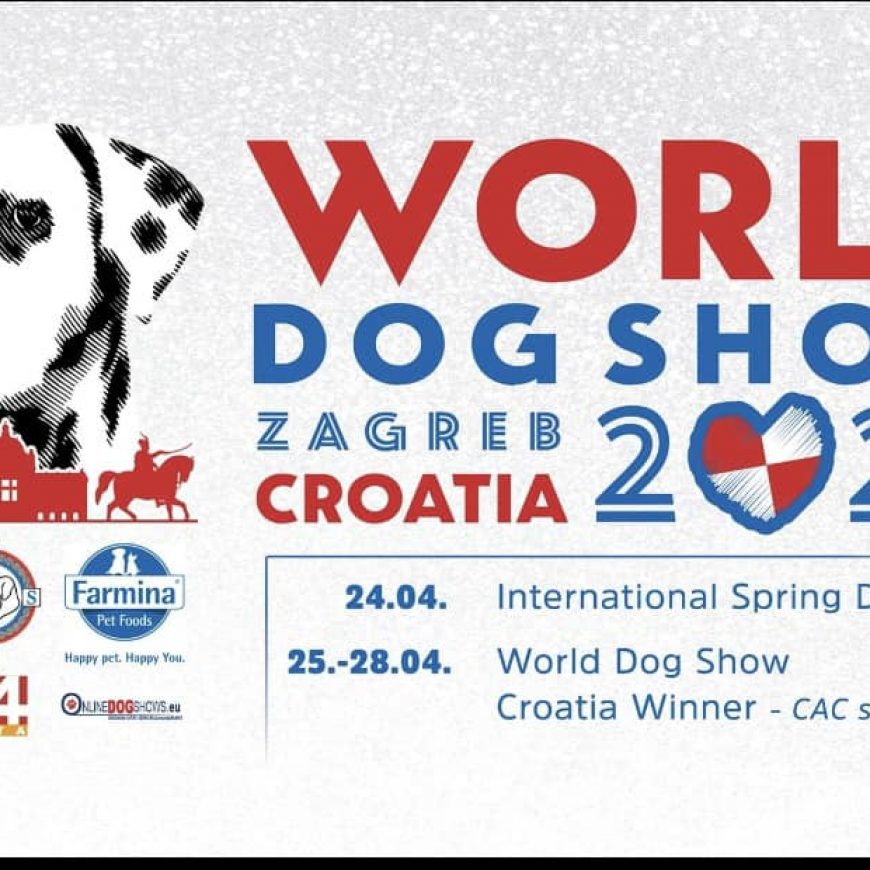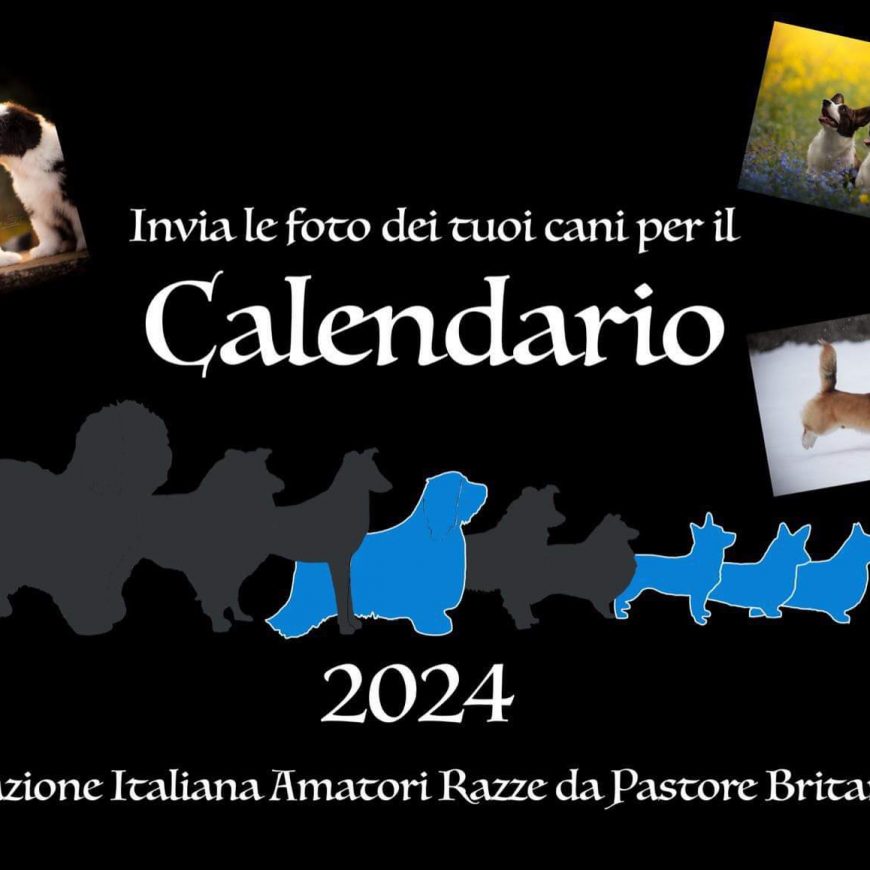Questa settimana per l’intervista abbiamo il piacere di ospitare Colleen Allen Grady co-titolare insieme a Dea Freiheit dell’Allevamento Snowdowne (Old English Sheepdog) , Portalnd, Oregon
1) Tell us about you, how long have you had and bred Old English Sheepdog?
I obtained my first OES. In 1976, Ch. Cheerio Classy Chasie when she was six months old. I had my first litter out of her, where I was on a co-ownership and she was bred back to her sire, which was quite a learning experience on in-breeding. We had only one male with two testicles. I paused breeding in the late 80s while I attended law school and began my practice. Getting back in was interesting because I attended a National and could readily pick out the different lines, even though the breeders were not on the end of the lead.
2) what are, according to you, the most important points in the OES standard?
To me, the most important aspects are that OES are to be balanced and square as that gives the breeder the limits for breeding to the standard. Almost everyone in theUSA breeds for reach and drive to maximize movement which creates the generic show dog and the fall back position for a judge, but when extreme movement is caused by a long body, you have lost breed type and it is difficult, if not impossible, to regain it.
3) what are the qualities you look for when breeding?
I want the sire and dam to compliment each other with, hopefully, no major faults in either. To me, after temperament and health clearances, both dogs must be square. We are at a point in our breeding program so that our dogs are basically square and sound. Therefore, we look for dogs that will complement and/or improve the dog in terms of head, neck, carriage and balance.
4) you need to choose a puppy to keep, what do you look for when you make this choice?
Special puppies stand out by comparison to their littermates, and by the visual memories we have of those special “hopefuls” that we have kept in the past. Without good legs, front and rear, you don’t have the basics for a show dog. Those attributes are readily seen in puppies. Heads are very important to us, so we look at the width between the eyes and the set of the ears. We want an equilateral triangle between the nose, and, hopefully, wide set eyes. As they mature, watching how they carry themselves while moving gives good guidance on which to keep.
5) when mating your bitches, what are you looking for in the future stud?
A future stud has to bring something to the table, both phenotypically and genetically in it’s pedigree. It really takes time and effort, not to mention expense, to find the best studs available. We have had to travel to Europe to expand our gene pool and maintain the proportions and body type we are trying to maintain. We have shipped in frozen semen from Europe as we were able to educate ourselves on the many lovely lines that we found by attending the Euro Shows. It is always easier to use a stud dog who is near to you, but if you sacrifice the effort of finding the very best male for your bitch, you are settling for mediocre results. Breed the best to the best and spare no expense! Is the only way to approach breeding..
6) in your opinion what is the current situation with the breed in America and Europe?
One of the reasons that we went to Europe to look for dogs was because we were finding “short legged” OES were becoming pervasive in many of the lines in the USA. More recently, we are seeing those lines being imported into Europe and seeing more short legged dogs than previously. After traveling to Europe for many shows, I found that the European breeders were placing more emphasis on maintaining heads and coats, which are definitely important hallmarks of the breed. In the USA, breeders concentrated on soundness and movement, I believe, because of the Group and Best In Show competitions which largely are a “most reach and drive” competition. Our heads have suffered, as a result. I remember one exhibitor telling a judge as he was comparing heads, “They don’t herd with their heads!”
7) do you reckon there are particular problems in the breed that you feel should be kept at close sight?
I’m not quite certain what this question is actually asking, but I believe we must concentrate on the basic description of an OES, and that is “square” and “balanced”. Temperament must be foremost, as I love the term “biddable”. If a breeder makes excuses for poor temperaments or does not make the effort to fully explore the temperament of the dogs to whom they are breeding, they are doing our breed a serious disservice as we produce more pets than show dogs and it is crucial that they are great companion dogs first!
8) which are the show results you are most proud of, and your most precious memories?
In the USA, winning a Best In Show, without spending thousands of dollars in advertisement is quite an accomplishment so we are very proud of our BIS kids! Also, the annual Top Twenty show adjacent to the OESCA National Specialty, is a wonderful event where three different judges evaluate the best OES in the USA, and we were fortunate enough to have won that with one of our very special girls, Lillie! In Europe, where several of our dogs were bred and/or sent, I am proud of the several outstanding dogs that have our SnowDowne dogs in their pedigree, including those that have won the Euro Show, Crufts and/or the World Show.
9) what advise would you give to a newcomer to the breed who would like to buy a puppy? And to the newcomer who would like to start breeding?
My advise to a newcomer is to spend the time necessary to get to know the breeders in your area as they will be the ones who can provide you with the guidance to begin your education. Join the local breed clubs and at least one all breed club so that you make friends that create a community of like minded individuals. Work with those people as you can not have a breeding program without the support of fellow breeders. Watch and learn from them, learn and ask questions. I find that too many young breeders think they instantly have more knowledge than their mentors after one or two litters, A mentor’s years of education and experience, of success and failure, should not be underestimated.
10) which are the major faults you see today in the breed?
I have a picture in my mind of what an OES, whether a puppy or adult should look like. As an example, on Facebook, I see many litters of OES puppy heads that look more like Bearded Collies. An OES, without a great head is a common dog, and cannot be admired if you are looking for a great or even good OES. I prefer shorter muzzles, and really can’t abide the long muzzles, that look more like bears. In my mind, I refer back to the language in the old standard, “no poodle or deerhound” characteristics, where the muzzles are equal to the skull. I also, stay away from lines with short legs as that characteristic seems to completely invade those pedigrees. I remember a recent OESCA National Specialty judged by someone who preferred the short legs, and was approached by a European visitor, while watching the photos being taken, the words whispered in my ear were, “They’re Dwarfs”, with a proper English accent. I’ll never forget that comment. The major faults I see in breeders is that they are often unwilling to acknowledge the quality of dogs with whom they are competing, that does the breed and the OES community a disservice.
1 Raccontaci di te, da quant’è che allevi Bobtail?
Ho avuto il mio primo Bobtail nel 1976 Ch. Cirio Classy Chasie aveva sei mesi. Ho avuto la prima cucciolata da lei. Quando ero co-proprietaria e lei fu accoppiata di nuovo a suo padre questo mi insegno’ molto sull’inbreeding. Da questo accoppiamento solo un maschio aveva entrambi I testicoli. Smisi di allevare negli ultimi anni 80 mentre studiavo legge e cominciai a lavorare. Riiniziare dopo questa interruzione è stato molto interessante , andai a vedere una National e li mi Accorsi che riuscivo a vedere le differenze delle linee di sangue anche se non c’erano gli allevatori alla fine del guinzaglio.
2) Quali sono per te i punti più importanti dello standard?
Per me gli aspetti piu’ importanti sono l’equilibrio e la quadratura, in quanto questi fattori danno all’allevatore i limiti per allevare secondo lo standard.
Quasi tutti in USA allevano per ottimizzare il movimento di allungo è spinta che crea il cane da Expo generico, e che è la scappatoia per il giudice. Ma quando si arriva al movimento estremo a causa di un corpo lungo hai perso la tipicità e sarà difficile ma non impossibile ristabilirla.
3) Quali sono le qualità che cerchi quando Allevi?
Voglio che lo stallone e la fattrice si completino a vicenda senza possibilmente grossi difetti in entrambi per me. dopo Il temperamento e la sicurezza della salute, entrambi i cani devono essere quadrati.
Siamo ad un punto nel nostro programma allevatoriale dove i nostri cani sono quadrati e sani per cui cerchiamo cani che completano o migliorano i soggetti,in termine di teste, collo, portamento ed equilibrio.
4) Devi scegliere un cucciolo da tenere, Cosa cerchi quando fai questa scelta?
I cuccioli speciali si distinguono subito dai loro fratelli, per paragone dai ricordi nelle nostre Memorie di quei cuccioli speciali tenuti in passato. Senza buoni appiombi davanti e dietro non hai le basi per un cane da Expo. Questi attributi si notano subito nei cuccioli. Le teste sono molto importanti per noi, guardiamo la distanza tra gli occhi e l’inserimento delle orecchie. Vogliamo un triangolo equilatero tra il naso, e occhi inseriti larghi man mano che crescono, guardando come si muovono ci dà una buona idea su chi tenere.
5) Quando accoppiate le femmine cosa cercate nei futuri stalloni?
Uno Stallone deve poter apportare sia fenotipicamente che geneticamente nel suo pedigree.
Ci si mette tempo e fatica per non parlare dei soldi per trovare il miglior maschio possibile. Abbiamo dovuto viaggiare in Europa per allargare il nostro Pool genetico, e mantenere proporzioni e strutture che stiamo provando di conservare. Abbiamo importato seme congelato dall’Europa, visto che abbiamo potuto scoprire molte belle linee di sangue frequentando gli europei.
È sempre più facile usare maschi che vivono vicino ma se non si fa il sacrificio di trovare il maschio migliore per la tua femmina ci si accontenta di risultati mediocri. Accoppiare il meglio con il meglio senza badare a spese è l’unico sistema di per avvicinarsi alla allevamento di qualità.
6) Secondo la tua opinione Qual è la situazione attuale in America ed in Europa?
Uno dei motivi che ci ha spinto a venire in Europa e il fatto che OES a gamba corta stanno diventando diffusi in molte linee di sangue in USA.
Più recentemente abbiamo visto quelle linee importate in Europa con più cani a gamba corta che prima.
Dopo essere venuta a molte mostre in Europa, ho notato che gli allevatori europei stanno mettendo più enfasi sulle teste e sui manti, che sono assolutamente Punti Fermi della razza. In USA gli allevatori si concentrano sulla salute e sul movimento. Credo che sia perché il gruppo ed il best in Show sono largamente basati sul movimento. Le teste hanno sofferto come risultato. Mi ricordo di un espositore che parlando con il giudice, che stava paragonando le teste, disse: non lavorano mica con la testa!
7) Secondo te ci sono problemi da tenere sott’occhio ?
Non so bene che cosa vuole chiedere questa domanda, ma secondo me bisogna concentrarsi sulla descrizione di base del OES che è “quadrato” e “bilanciato” .
Il carattere deve venire prima di tutto, visto che amo il termine “docile”. Se un allevatore scusa un cattivo temperamento o non si impegna a fondo per indagare sul carattere dei cani che sta usando, fa alla nostra razza un grosso dispetto in quanto noi alleviamo più Pet che cani da Expo ed è cruciale che siano per prima cani da compagnia eccezionali.
8 Quali sono i risultati che ti rendono più fiera?
Negli Usa vincere Best in Show senza spendere migliaia di dollari in pubblicità è un notevole traguardo Pertanto siamo molto Fieri dei nostri ragazzi da Best in Show. Anche l’Expo annuale dei Top 20 Expo collegata all’OESCA National Specialty è un meraviglioso evento, dove tre giudici diversi valutano il miglior OES in USA, E noi siamo stati fortunati di aver vinto con la nostra femmina speciale Lillie
In Europa dove alcuni nostri soggetti sono stati allevati e/o spediti sono fiera di alcuni meravigliosi cani che hanno i nostri SNOWDOWNE nei loro pedigree, ed hanno vinto EUROPEI, MONDIALI e CRUFTS.
9) Che consigli daresti a chi si avvicina alla razza ?
Il mio consiglio è di spendere più tempo possibile per conoscere gli allevatori nella tua zona, in quanto loro saranno quelli che ti seguiranno per la tua educazione. Associarsi ai club di razza locali così da entrare a farne parte e conoscere Chi la pensa come voi, lavorando con queste persone. per il vostro programma allevatoriale. Osservateli ed imparate da loro, fate domande. Trovo che molti neofiti si credono perfetti anche solo dopo un paio di cucciolate. L’esperienza di un mentore, i suoi successi, i suoi fallimenti non dovrebbero mai essere sottostimati.
10) Quali sono i maggiori difetti che vedi oggi?
Ho un’immagine nella testa di come dovrebbe essere un OES adulto o cucciolo. per esempio su Fb vedo molte cucciolate di OES con teste che assomigliano più a Bearded Collie. Un OES senza una bella testa e’ un cane mediocre, e non puo’ essere apprezzato se stai cercando un bel cane.
Preferisco musi corti e non sopporto proprio i musi lunghi che assomigliano più a degli orsi. Nella mia testa faccio fede al vecchio standard che citava “nessuna caratteristica dei barboni o dei deerhound” dove i musi sono pari al cranio. Sto anche lontano da cani con gambe corte in quanto questa caratteristica e’ molto dominante.
Mi ricordo di una National OESCA giudicata da un giudice che preferiva gambe corte e fui avvicinata da un visitatore europeo, mentre guardavo i fotografi, mi sussurro’ nell’orecchio “ma sono nani”con accento inglese. La cosa che più mi salta all’occhio degli espositori è che non riconoscono i pregi dei cani degli altri concorrenti cio’ fa’ danno sia la razza che ha la comunità degli OES

